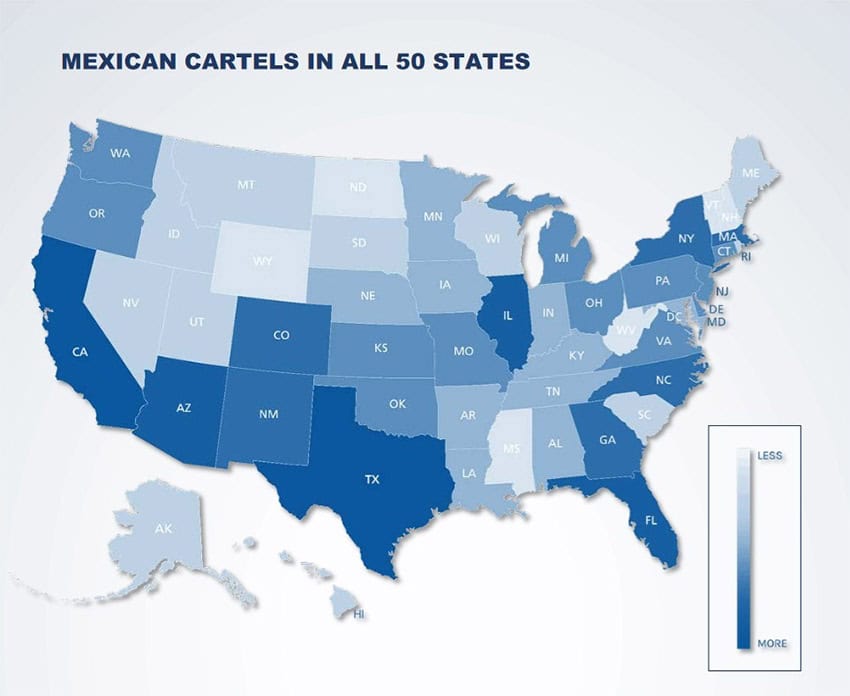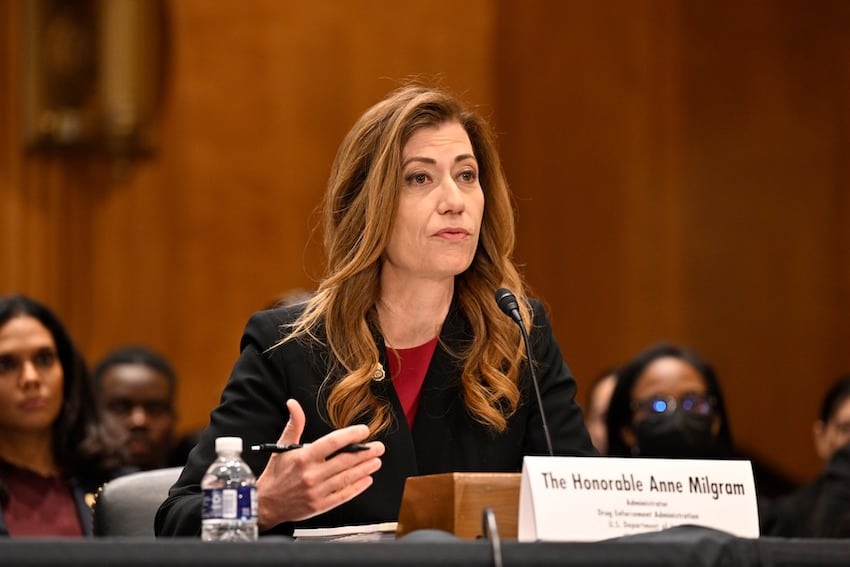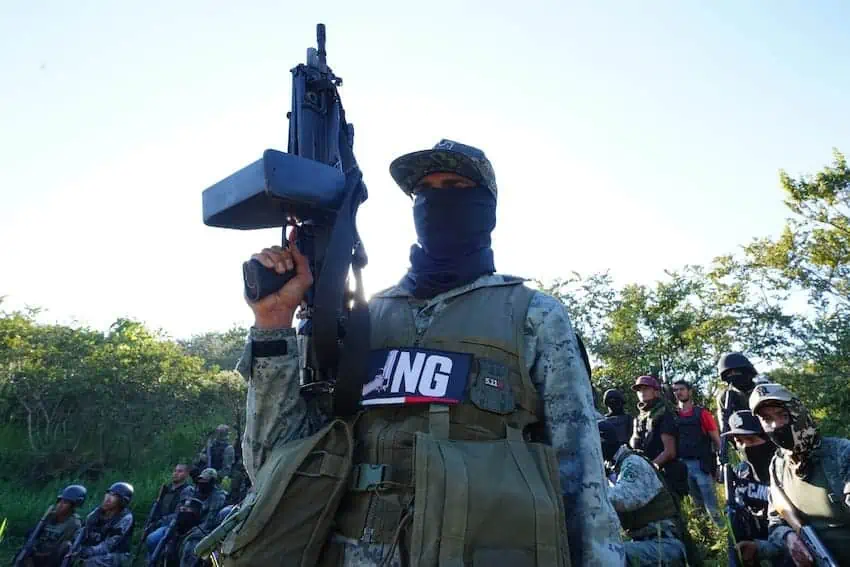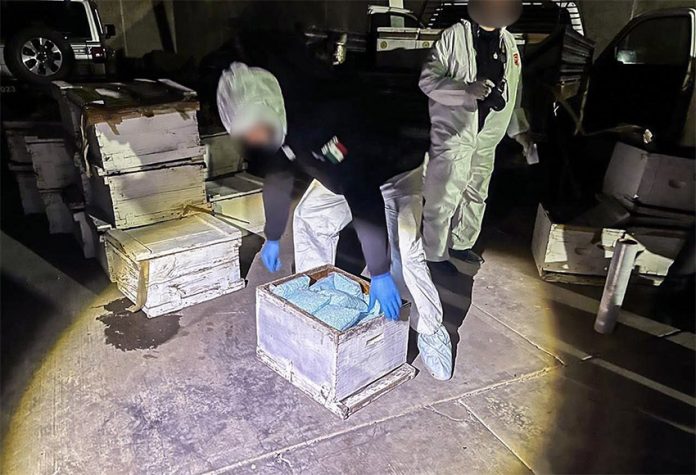The Sinaloa Cartel and the Jalisco New Generation Cartel (CJNG) have a presence in every state of the United States and “have caused the worst drug crisis in U.S. history,” according to a new report from the Drug Enforcement Administration (DEA).
In its National Drug Threat Assessment (NDTA) 2024 report, the DEA describes the rival cartels as “the main criminal organizations in Mexico, and the most dangerous.”
“They control clandestine drug production sites and transportation routes inside Mexico and smuggling corridors into the United States and maintain large network ‘hubs’ in U.S. cities along the Southwest Border and other key locations across the United States,” the report says.
The DEA drug threat assessment notes that the Sinaloa Cartel and the CJNG are also involved in “arms trafficking, money laundering, migrant smuggling, sex trafficking, bribery, extortion, and a host of other crimes” and “have a global reach extending into strategic transportation zones and profitable drug markets in Europe, Africa, Asia, and Oceania.”
In the United States — the world’s largest market for illicit drugs — “the scope of the Sinaloa and Jalisco cartels’ control over each segment of the criminal drug trade has effectively eliminated any competition in U.S. markets, and enabled cartel members to establish a presence in every U.S. state,” the report says.
Included in the report is a map that shows the varying levels of Mexican cartel presence in the U.S.

States shaded in dark blue to indicate a greater cartel presence include the border states of California, Arizona and Texas as well as Illinois, Florida and New York.
The DEA says that “together, the Sinaloa and Jalisco cartels have caused the worst drug crisis in U.S. history,” adding that they “dictate the flow of nearly all illicit drugs into the United States.”
“Their dominance over the synthetic drug trade in particular is evident in the relentless stream of illicit fentanyl and methamphetamine crossing the border toward U.S. markets,” the agency adds.
In a letter included in the report, DEA Administrator Anne Milgram says that the Sinaloa Cartel and the CJNG “rely on chemical companies and pill press companies in China to supply the precursor chemicals and pill presses needed to manufacture the drugs.”
“They operate clandestine labs in Mexico where they manufacture these drugs, and then utilize their vast distribution networks to transport the drugs into the United States. They rely on associates in the United States to distribute the drugs at a retail level on the streets and on social media,” she wrote.
“Finally, the Cartels utilize Chinese money laundering organizations to move their profits from the United States back to Mexico.”
Milgram outlines the DEA’s efforts to combat Mexican cartels, including “enforcement operations such as Operation Overdrive, which targets violent individuals in our communities, and Operation OD Justice, which partners with local law enforcement to
investigate fatal drug poisonings.”

The cartels’ reach into U.S. communities
The DEA says that “thousands of Sinaloa and Jalisco cartel-linked drug dealers in the United States bring illicit fentanyl, methamphetamine, and other drugs into American communities every day.”
“A web of illicit drug wholesalers, only one step removed from the cartels in Mexico, operate in major cities throughout the United States,” the agency adds.
“… Smaller branches of the cartels spread the drugs further, often using social media
platforms and messaging applications to advertise their deadly products and recruit couriers and dealers.”
The report says that fentanyl made by Mexican cartels is “the main driver behind the ongoing epidemic of drug poisoning deaths in the United States.”
It also says that fentanyl is much more profitable for the cartels than heroin.
“Unlike fentanyl, heroin is a traditional plant-based opioid (derived from the opium poppy). Crop-based drugs are time consuming and expensive to produce. … Fentanyl can be produced continuously, quickly, and efficiently, unimpeded by the challenges and risks associated with heroin production,” the report says.
The leadership structure of the Sinaloa Cartel
The NDTA report states that the Sinaloa Cartel “does not have a leader.”

“Instead, the cartel ‘umbrella’ covers four separate but cooperating criminal organizations,” the DEA says.
“This structure,” the agency says “theoretically gives the heads of the independent
drug trafficking groups the ability to share resources — like smuggling routes, corrupt contacts, access to illicit chemical suppliers and money laundering networks — without sharing profits or having to answer to a main chain of command.”
“In reality, however, internal power struggles and fluctuating alliances leave the viability of the ‘umbrella model’ in question,” the DEA adds.
It says that the four separate criminal organizations are directed by:
- Los Chapitos: the collective name for Iván Guzmán Salazar, Alfredo Guzmán Salazar,
Joaquín Guzmán López, and Ovidio Guzmán López — sons of imprisoned drug lord and former Sinaloa Cartel leader Joaquin “El Chapo” Guzmán Loera.
(Ovidio Guzmán was arrested in early 2023 and extradited to the United States last September.)
- Ismael “El Mayo” Zambada García: A co-head of the Sinaloa Cartel for more than three decades.
- Aureliano “El Guano” Guzmán Loera: Brother of “El Chapo.”
- Rafael Caro Quintero: A notorious drug lord who was arrested in July 2022.
Since Caro Quintero’s arrest, “Los Chapitos have been fighting his organization (known as the Caborca Cartel) for control of the Sonora desert region, a crucial trafficking route through the Mexican state of Sonora to the Arizona border,” the report says.
The leadership structure of the CJNG

The DEA says that the Jalisco cartel “operates under a franchise business model.”
“The cartel is overseen by Ruben “El Mencho” Oseguera Cervantes, and a small group of top-tier commanders who report directly to El Mencho. A second tier of regional and ‘plaza’ bosses operate under the top tier leaders,” the report says.
The DEA states that the franchise model allows “each semi-independent group to customize its operations according to specific areas of expertise (for example, running clandestine methamphetamine labs) or market demands, provided they comply with naming, branding, and organizational structure requirements, and follow the general direction handed down by Jalisco Cartel leadership.”
It also says that the franchise model allows the CJNG to expand quickly as new franchises are “easy to establish.”
“The Jalisco Cartel also maximizes their revenue through this model, because leadership does not pay the operating costs of its franchises but does collect a percentage of overall profits,” the report says.
“One of the key weaknesses of the franchise model, however, is that individual franchise groups operating under the Jalisco Cartel name can form their own unique alliances with other criminal groups, some of which are in direct opposition to the alliances of other franchises,” says the DEA.
Mexico News Daily
